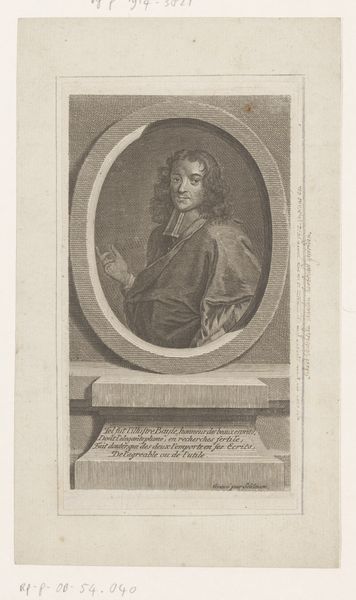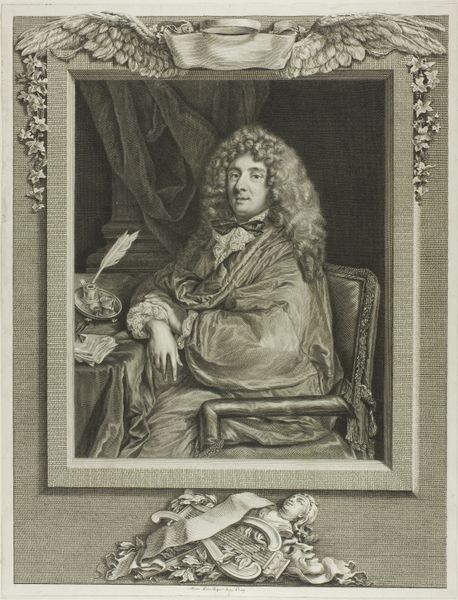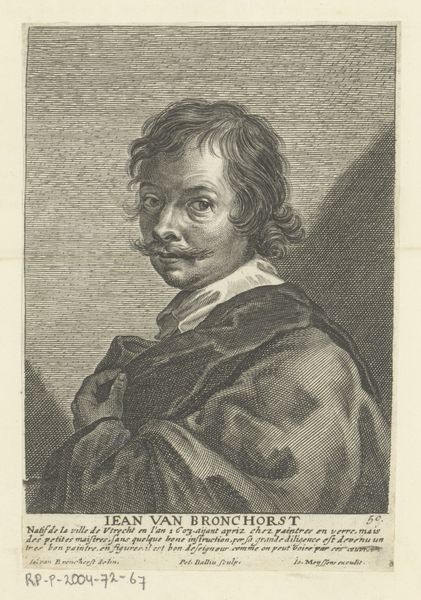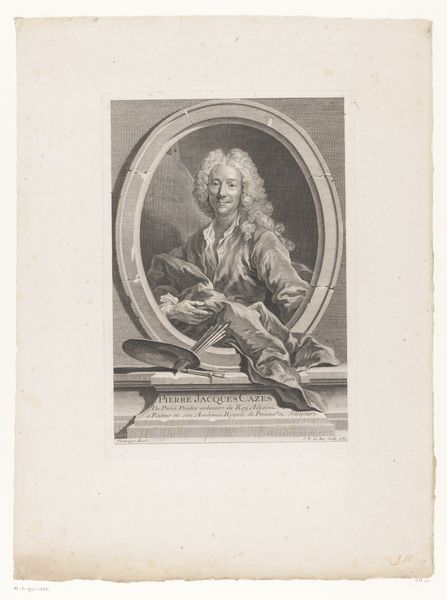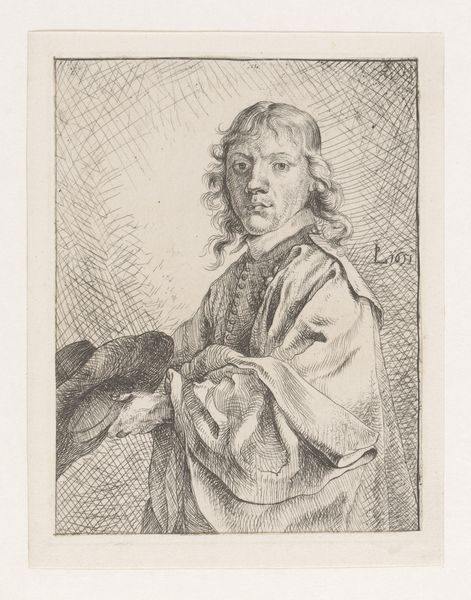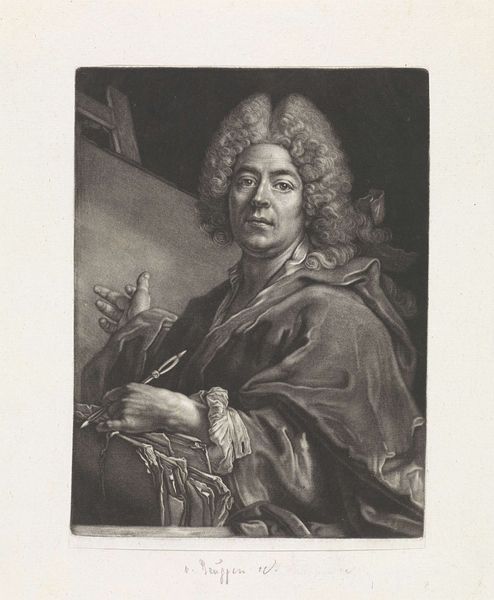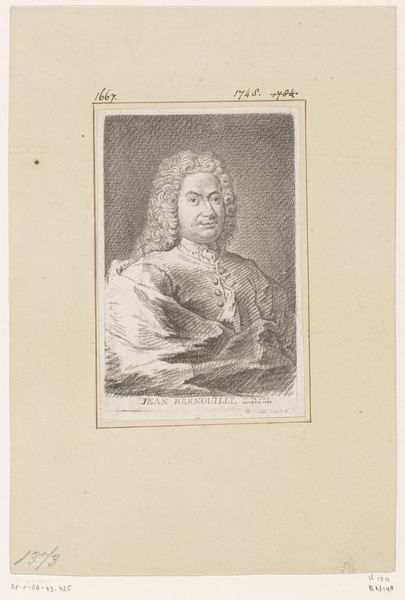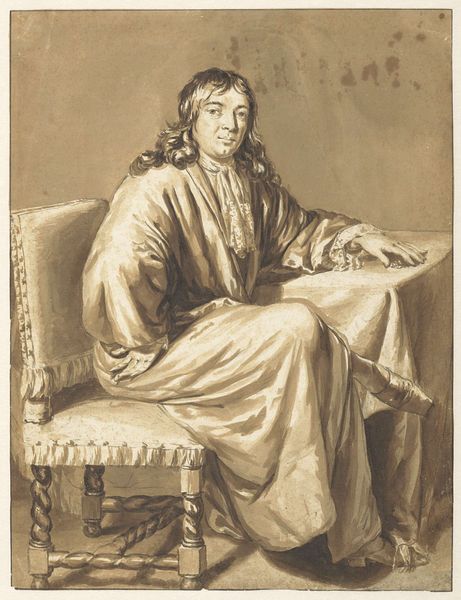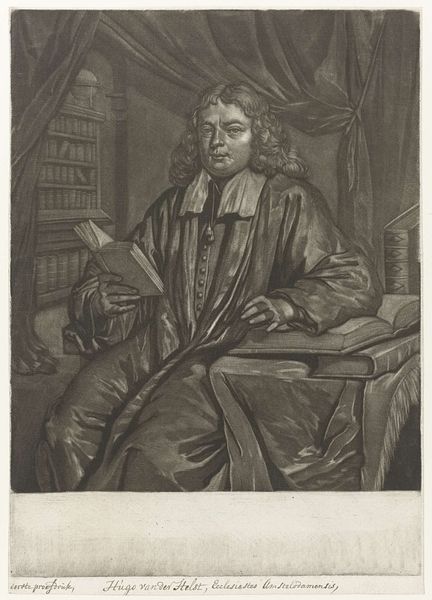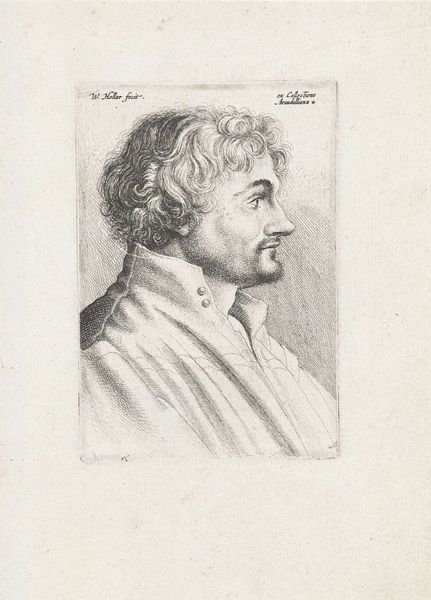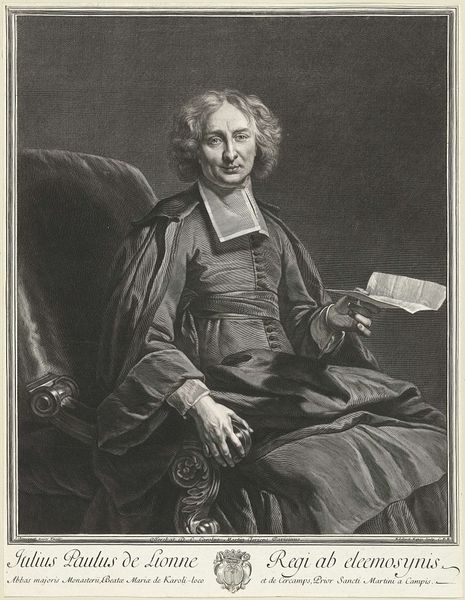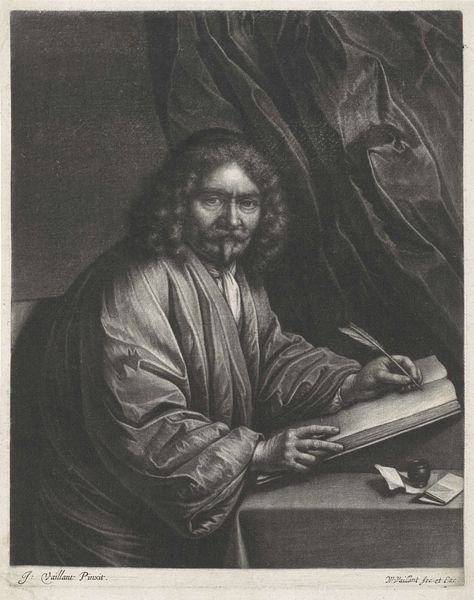
engraving
#
portrait
#
baroque
#
form
#
line
#
engraving
#
realism
Dimensions: height 279 mm, width 213 mm
Copyright: Rijks Museum: Open Domain
Editor: This is a portrait of Jean-Jacques Keller by Gérard Edelinck, dating somewhere between 1666 and 1707. It's an engraving, so black and white with very fine lines, and the subject has quite an intense gaze. How do you interpret this work purely from its visual components? Curator: Immediately, the focus lies on the masterful manipulation of line. Edelinck’s technical skill in rendering form through varying the thickness and density of engraved lines is striking. Note how light falls across Keller's face and robe – achieved purely through gradations of black ink on white paper. The background, almost a stage set, is equally compelling. Editor: Yes, the backdrop feels almost like a theatrical stage! Are you drawn to particular aspects of its composition? Curator: Indeed. Observe the placement of the figure: not centered, yet balanced by the implements of his craft. The geometric rigour is then softened by the organic forms – the curls of his hair, the drape of his robe. The balance suggests the harmony between intellect and practice, theory and execution. The engraver balances between baroque and realism. Editor: That's a great observation about balancing the geometrical with the organic! The use of light and shadow definitely directs the eye exactly where it needs to go, which makes this quite compelling despite the apparent simplicity. Curator: Precisely! The beauty of the work lies not in overt symbolism but in the pure formalism with which Edelinck captures the essence of his subject, allowing the medium to communicate volumes. Editor: I definitely see what you mean; looking beyond the historical context really helps one to notice and admire the meticulous formal artistry at play. Curator: Absolutely. Formal analysis allows one to understand and appreciate the inherent visual grammar of a work of art.
Comments
No comments
Be the first to comment and join the conversation on the ultimate creative platform.

